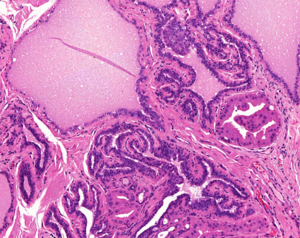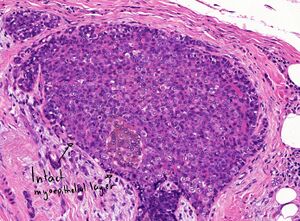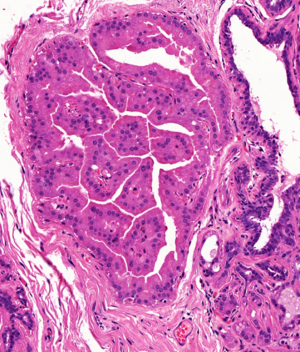41. Invasive ductal carcinoma
Staining: HE
Organ: Breast
Description:
Normal breast tissue, including lots of adipose tissue, is visible on the left and right sides of the slide. In the middle is the invasive tumor. The tumor has a desmoplastic (fibrotic) neostroma, and the gland-like structures show mild atypia.
DCIS, the precursor lesion of invasive ductal carcinoma, is also visible on the top of the slide. It’s a large, dilated duct that is filled with tumor cells. Its myoepithelial cell layer is intact, which is the difference between DCIS and invasive carcinoma.
On the left of the slide apocrine metaplasia is visible. The cells of the ducts resemble apocrine sweat glands. These cells are larger than normal, have abundant eosinophilic cytoplasm, round nuclei and prominent nucleoli.
The above info is from my seminar teacher. According to the videos published by the department, what is described in text and pictures here is actually just hyperplasia, but DCIS can be seen in the butterfly-shaped duct right below.
Diagnosis: Invasive ductal carcinoma
Risk factors for breast cancer:
- Nulliparity
- Excess oestrogen
- Familial BRCA gene mutations
- Positive family history
Theory:
The desmoplastic neostroma makes the tumor firm and therefore palpable.
The degree of differentiation of the gland-like structures the tumor forms decides the grade of the tumor. The grading system is called the Bloom-Richardson grading system.






